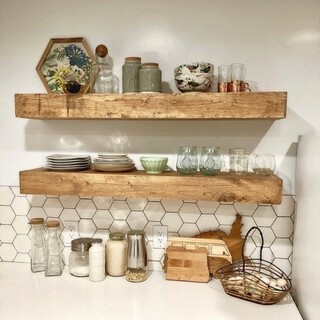Modern and rustic are two design styles that appear to be antithetical. That, however, is not the case. In actuality, they're so complementary and intriguing that when you combine them, real design magic occurs.
When a modern house is complemented with rustic features, it has the odd effect of softening the harshness of the contemporary design. Rustic's texture and warmth contrast modern simplicity and coldness by mixing history with antique materials and worn-in vintage appeal.
There are many individuals who have a hard time mixing different design trends, and this combination is no exception. The notion that you can combine modern with rustic comes across as difficult to some people we've spoken with. This is because we've counseled and consoled several clients through this particular combination.
It's quite common for people to be attracted to various aspects of a design style, as well as different ones. In fact, couples who despise each other's taste in design will come to us with genuine worry that they'll have trouble living with what the other likes.
When individuals disagree about how to decorate, the subject is often avoided. In the worst-case scenario, some houses are left unfinished for years!
I feel that your house should be a place where you can go to escape from the hectic activity of the rest of the world. That's why it's a crying shame when some properties are left unfinished.
A dreary, uninspiring house decorating problem is the last thing you want in your home.
Even as we spend almost all of our time at home these days, you're probably feeling a tug to get a few things done here and there, aren't you?




